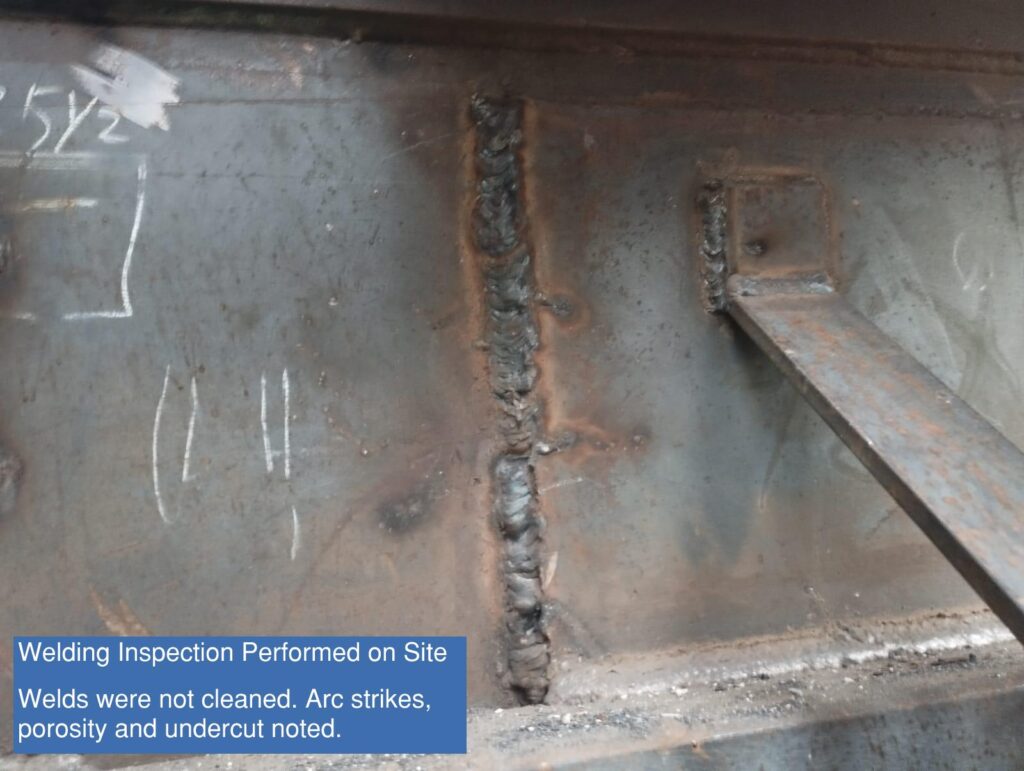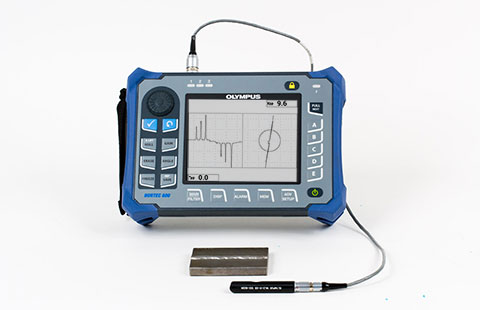Welding Inspection Racine: Making Sure Precision and Dependability in Every Weld
Welding Inspection Racine: Making Sure Precision and Dependability in Every Weld
Blog Article
Cutting-edge Methods to Fillet Weld Examination and Screening: Enhancing Weld Quality and Conformity Requirements
In the realm of welding, the high quality and stability of fillet welds play an important role in guaranteeing the structural sturdiness and dependability of numerous industrial parts. With the constant drive for improved performance and compliance with strict standards, the exploration of innovative approaches to fillet weld evaluation and screening has actually ended up being imperative. As sectors advance, the standard techniques may no more be adequate in fulfilling the demands of modern welding applications. By welcoming innovative innovations and methodologies, a brand-new horizon of possibilities arises in the world of weld high quality assessment and adherence to conformity requirements.
Advanced Non-Destructive Screening Techniques
Making use of cutting edge modern technologies, advanced non-destructive screening methods play a critical function in making certain the stability and top quality of fillet welds. These techniques, such as phased array ultrasonic testing (PAUT) and magnetic fragment testing (MPT), deal thorough understandings right into the weld's interior structure without triggering any kind of damage to the material. PAUT, for example, uses multiple ultrasonic components to inspect the weld from various angles, supplying a thorough visualization of potential flaws like absence of fusion or fractures.
By employing these advanced non-destructive screening methods, weld examiners can properly analyze the top quality of fillet welds, guaranteeing conformity with market criteria and regulations. The ability to identify problems early on not just boosts weld top quality yet also stops pricey rework or failures in architectural honesty, highlighting the importance of these innovative screening methods in welding inspections.
Robotics and Automation in Inspection
The combination of robotics and automation has changed the assessment process for fillet welds, improving efficiency and precision in quality analysis. Robotics use exact control and repeatability in inspecting welds, making certain constant and reliable outcomes. Automated systems can be programmed to comply with specific assessment courses, guaranteeing thorough protection of welds and reducing the threat of human error.
Robot examination systems geared up with innovative sensors can find and measure weld functions with high accuracy, providing comprehensive information for evaluation. These systems can identify flaws such as cracks, lack of combination, and porosity, making it possible for prompt restorative activities to be taken. In addition, robotics and automation enable real-time information collection and evaluation, offering prompt feedback to operators and facilitating quick decision-making procedures.
Furthermore, making use of robotics and automation in fillet weld inspection improves general performance by decreasing assessment times and raising assessment throughput. By streamlining the assessment process, makers can ensure weld top quality and compliance requirements are fulfilled efficiently, ultimately causing set you back financial savings and enhanced item high quality.
Making Use Of Artificial Intelligence for Analysis
Man-made intelligence plays a pivotal duty in improving the effectiveness and accuracy of evaluation in fillet weld inspection procedures. AI algorithms can rapidly refine huge amounts of information from weld assessments, detecting issues or disparities that may be testing to identify over at this website with the nude eye - Welding Inspection Racine.
Moreover, AI systems can learn from previous evaluation data, continuously boosting their capability to determine prospective issues and inconsistencies in fillet welds. This flexible learning ability boosts the total quality control process, minimizing the chance of human error and guaranteeing that welds satisfy the needed requirements. By incorporating expert system into fillet weld analysis, industries can achieve higher levels of effectiveness, consistency, and compliance in their examination techniques.
Portable Tools for On-Site Evaluation
 Enhancing area inspection effectiveness, the adoption of mobile devices revolutionizes on-site analysis procedures for fillet welds. These devices offer flexibility and convenience, allowing inspectors to conduct extensive assessments in different places, consisting of remote or difficult atmospheres. Portable tools such as ultrasonic testing devices, magnetic particle evaluation equipment, and digital radiography systems provide real-time data and high-resolution imaging capabilities, enabling quick decision-making and instant responses on weld quality.
Enhancing area inspection effectiveness, the adoption of mobile devices revolutionizes on-site analysis procedures for fillet welds. These devices offer flexibility and convenience, allowing inspectors to conduct extensive assessments in different places, consisting of remote or difficult atmospheres. Portable tools such as ultrasonic testing devices, magnetic particle evaluation equipment, and digital radiography systems provide real-time data and high-resolution imaging capabilities, enabling quick decision-making and instant responses on weld quality.One substantial benefit of mobile tools is their ability to improve assessment treatments, decreasing downtime and enhancing overall productivity. Assessors can quickly deliver these tools to different work websites, getting rid of the need for transferring heavy equipment or parts to off-site facilities. Additionally, the transportability of these tools promotes cost-effectiveness by decreasing transport costs and accelerating evaluation timelines.
Furthermore, the use of mobile devices for on-site evaluation promotes Discover More aggressive top quality control procedures, as inspectors can promptly determine and deal with any kind of possible welding problems or discrepancies. By including these ingenious technologies right into on-site assessment practices, welding specialists can guarantee conformity with industry criteria and enhance weld top quality, ultimately bring about boosted architectural stability and safety in numerous welding applications.
Combination of Data Monitoring Equipment
Having maximized on-site evaluation procedures through the application of portable devices, the next phase entails the seamless assimilation of data administration systems to even more boost efficiency and information evaluation capacities in fillet weld evaluation and screening. Welding Inspection Racine. By integrating information management systems right into the examination process, organizations can simplify data collection, storage, and evaluation. This assimilation allows for real-time surveillance of weld quality, immediate recognition of issues, and prompt decision-making to remedy any kind of concerns that might arise during the evaluation process
Information monitoring directory systems play a vital function in streamlining examination data, assisting in easy gain access to for licensed employees, and guaranteeing information stability and safety and security. Via the combination of these systems, inspectors can produce thorough reports, track historical data for pattern analysis, and improve total process performance. In addition, the integration of data administration systems makes it possible for smooth interaction between various stakeholders involved in the assessment process, fostering collaboration and boosting general high quality control measures. Eventually, the integration of information administration systems offers to elevate the criteria of fillet weld evaluation and screening, making sure compliance with market policies and boosting weld quality.
Final Thought
In conclusion, cutting-edge methods to fillet weld inspection and testing have actually considerably improved weld top quality and compliance requirements. Advanced non-destructive screening methods, robotics, automation, synthetic knowledge, portable tools, and information management systems have actually changed the way weld inspections are carried out. By utilizing these technologies, sectors can guarantee that welds meet the called for quality criteria and regulations, eventually enhancing overall effectiveness and safety in welding processes.

By utilizing these advanced non-destructive testing methods, weld assessors can accurately assess the high quality of fillet welds, making sure conformity with sector standards and policies. Portable tools such as ultrasonic testing gadgets, magnetic bit assessment devices, and digital radiography systems give real-time information and high-resolution imaging abilities, allowing fast decision-making and instant comments on weld high quality.
Having optimized on-site inspection processes via the use of mobile tools, the following stage involves the seamless assimilation of information management systems to further boost effectiveness and data evaluation abilities in fillet weld evaluation and testing (Welding Inspection Racine). Inevitably, the combination of data monitoring systems offers to elevate the criteria of fillet weld evaluation and testing, ensuring conformity with market policies and boosting weld high quality
 In final thought, ingenious methods to fillet weld inspection and screening have considerably enhanced weld quality and compliance criteria.
In final thought, ingenious methods to fillet weld inspection and screening have considerably enhanced weld quality and compliance criteria.Report this page